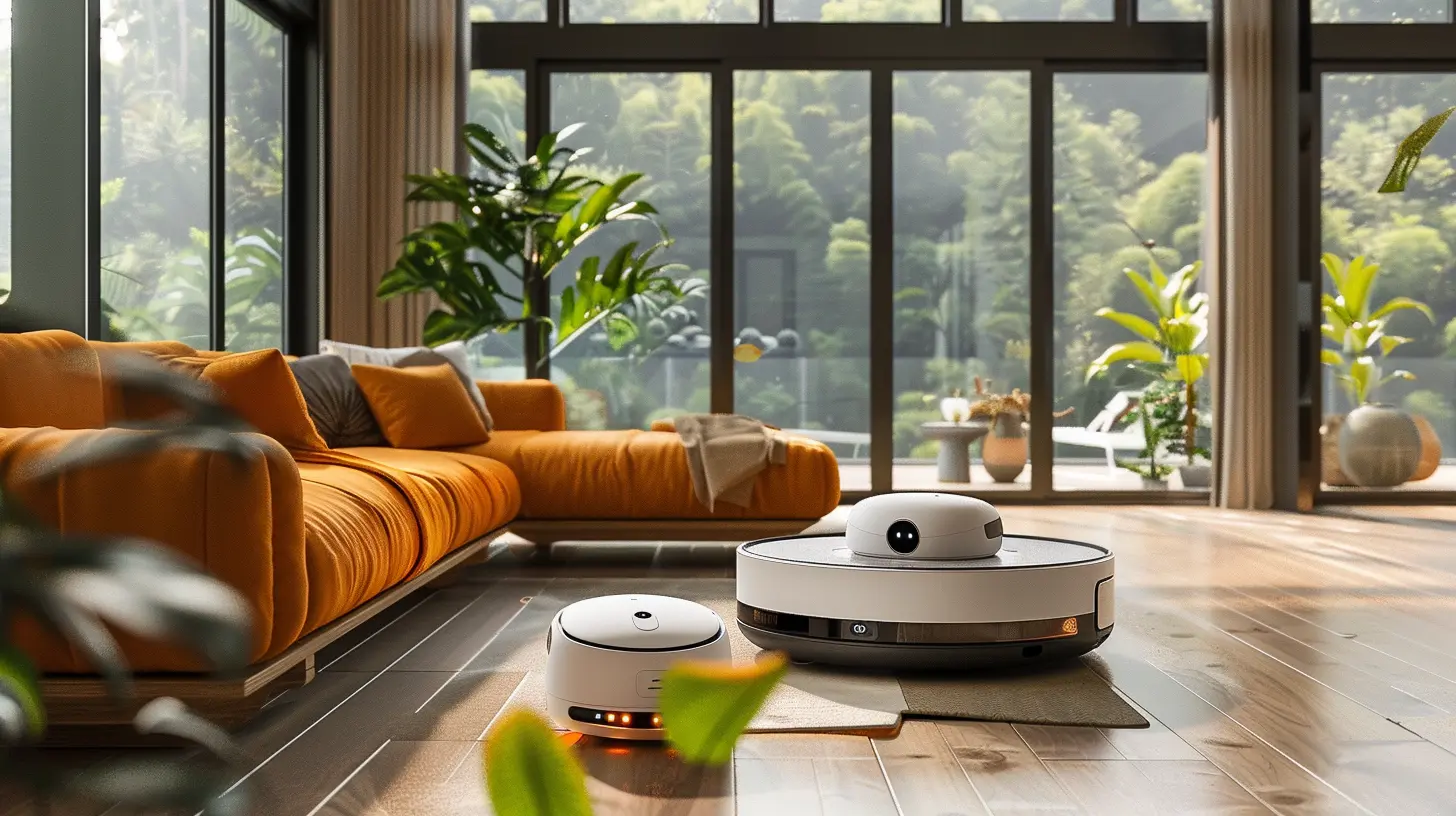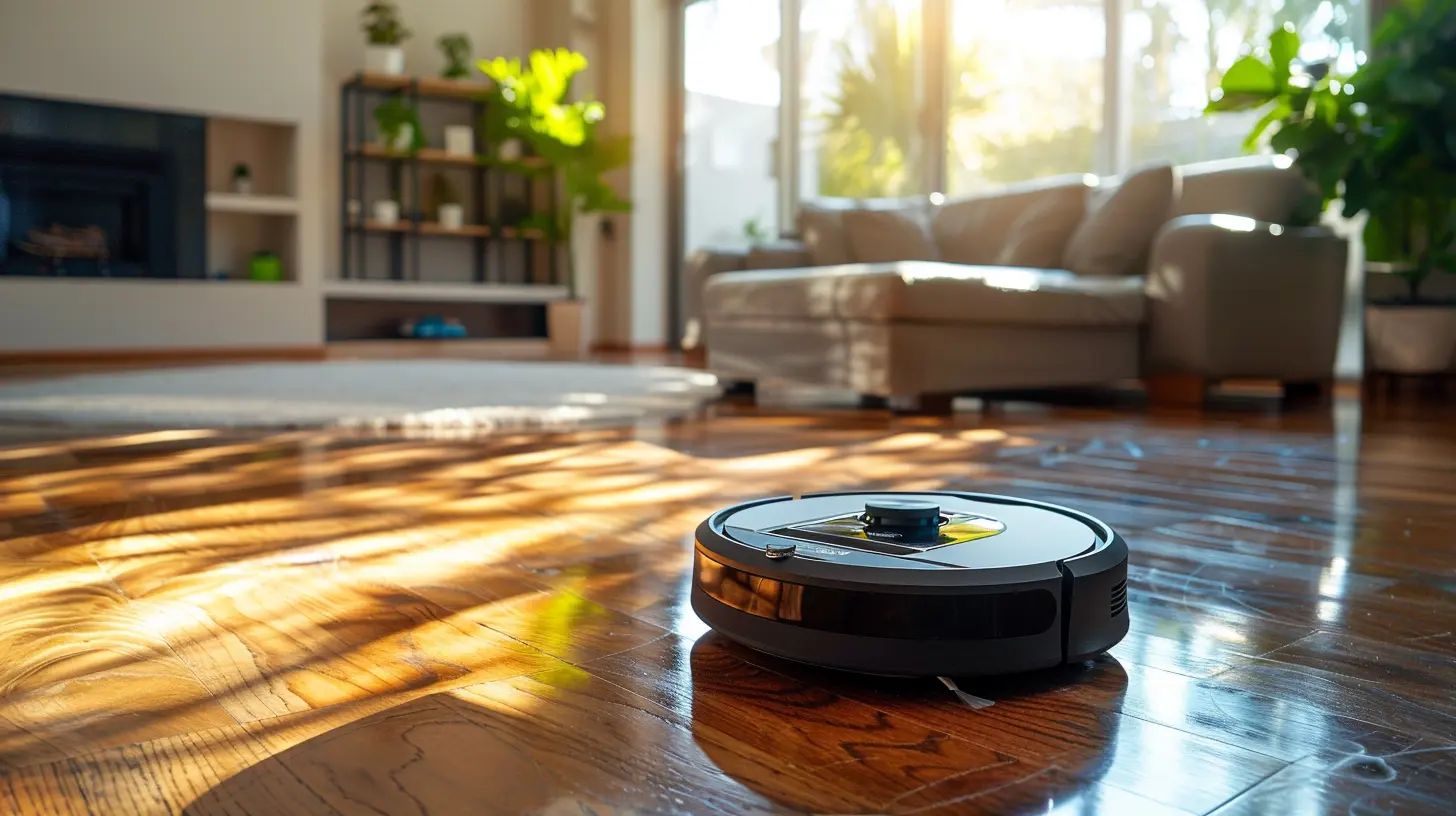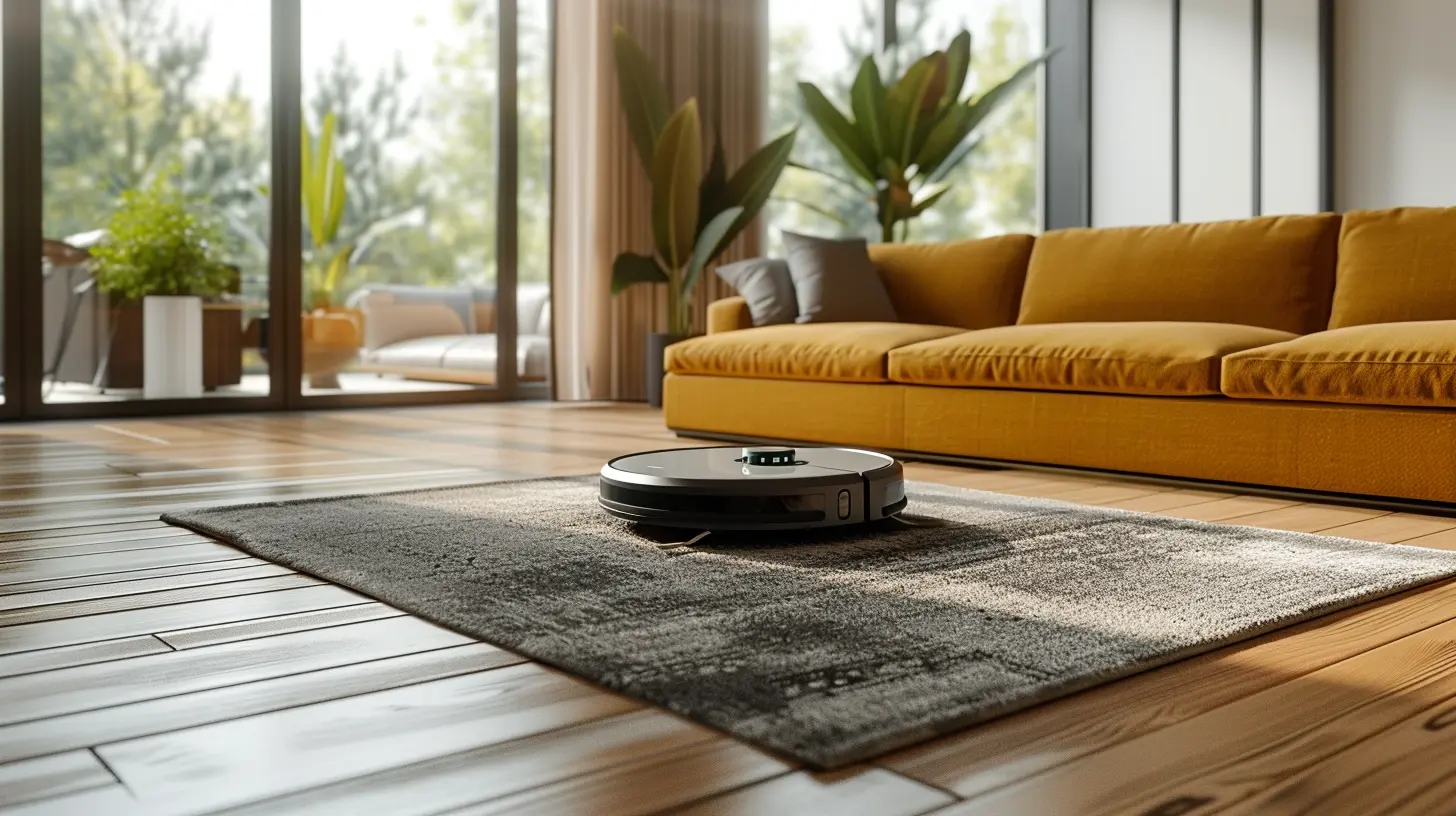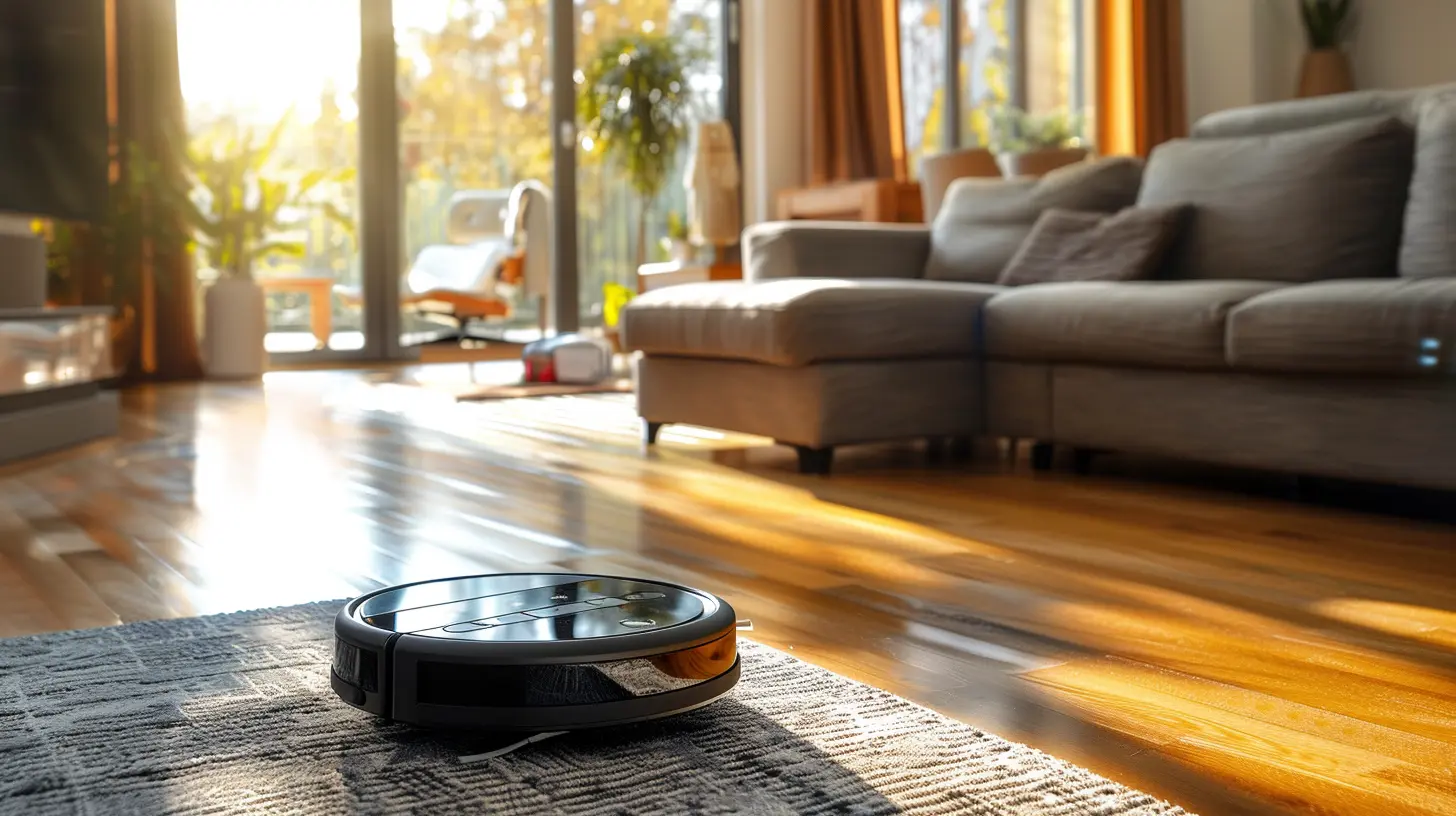How AI is Revolutionizing Home Robotics
15 October 2025
Home robotics have come a long way since the days of mechanical toys and simple gadgets. Today, the combination of robotics with artificial intelligence (AI) is breathing life into our homes in ways we’ve only seen in movies. From smart vacuum cleaners to robot assistants, AI is transforming the way we interact with technology on a daily basis. It’s not just a wave of cool, futuristic gadgets; AI-driven robots are making our lives easier, more efficient, and sometimes even a bit more fun.
But have you ever wondered how AI is really making this possible? Let’s dig into how AI is revolutionizing home robotics, and why it’s more than just a buzzword.

What Exactly is AI in Home Robotics?
AI, or Artificial Intelligence, is the technology that allows machines to "think" and "learn" from their environment. In simpler terms, it’s what gives robots the ability to make decisions on their own. This isn’t your run-of-the-mill programming that tells a device to do a specific task. AI-powered robots can analyze data, learn from user behaviors, adapt based on their surroundings, and even predict what needs to be done next. Sounds wild, right?In the home robotics space, AI enables gadgets to go beyond basic commands. Instead of just following instructions like a well-trained dog, these machines are evolving to become more like helpful companions—ones that can anticipate your needs and make your life smoother without you having to lift a finger.

The Evolution of Home Robotics
Before AI entered the scene, home robotics was fairly straightforward. Remember those early robot vacuum cleaners? They were cool, sure, but they kind of just bumped around randomly, hoping to eventually clean your whole floor. There was no "smart" in their operation.Fast forward to now, and AI has completely changed the game. Modern robot vacuums aren’t just rolling around aimlessly—they’re mapping your entire house, remembering where they've been, and even learning the best times to clean based on your daily routine. That’s the power of AI in action!
The Early Days of Robots
In the early 2000s, home robots were mostly gimmicky. You had robotic pets, simple vacuums, and maybe a few quirky toys. These robots didn’t have "minds" of their own. They executed pre-programmed tasks and that was pretty much it. Sure, they were fun, but they weren't exactly revolutionizing our lives.Enter AI: The Game Changer
With the integration of AI, robots have become smarter, more efficient, and more capable. AI allows these machines to process data in real-time, make judgments, and even learn from their mistakes. It’s like they’ve gone from being toddlers who can only follow basic instructions to teenagers who can think for themselves (but, you know, more helpful and less moody).
Examples of AI in Home Robotics
So, what kinds of AI-powered robots are we seeing today? Let’s explore some of the most fascinating examples.1. Smart Vacuum Cleaners
Let’s start with the classic example: the robot vacuum. Gone are the days when these little guys would just roam around your house like they were lost. Today’s AI-powered vacuum cleaners (think Roomba or Roborock) are equipped with sensors, cameras, and sophisticated algorithms that allow them to map out your home. They don’t just clean randomly—they clean smartly.They can detect when an area is dirtier than others, avoid obstacles like furniture, and even return to their charging stations when they’re running low on battery. Some models can even be controlled with voice commands via smart assistants like Alexa or Google Assistant. It’s like having a mini-maid that never complains.
2. AI-Enabled Home Assistants
Think about devices like Amazon Echo or Google Home. While they’re not robots in the traditional sense, they do use AI to make your life easier. These smart devices act as command centers for other home gadgets. With just your voice, you can control lighting, thermostats, and even ask for recipes while cooking.More advanced AI assistants are already being tested that could move around your house and physically assist you with tasks. Imagine asking your robot to bring you a drink from the fridge or to help you fold laundry. That’s not science fiction anymore—it’s on the horizon!
3. AI-Powered Security Robots
Home security is another area where AI in robotics is making a splash. AI-enhanced security robots can patrol your property, detect unusual activities, and even alert you or authorities of potential threats. Some of these robots come with facial recognition, allowing them to differentiate between family members, guests, and intruders.AI also enables these robots to learn the layout of your home or yard, making them more effective at patrolling and identifying irregularities. It’s like having a security guard that never sleeps or takes a break, watching over your home 24/7.
4. Robotic Lawn Mowers
Who enjoys mowing the lawn? (Crickets.) Enter AI-powered robotic lawn mowers. These nifty gadgets can map your yard, learn the best trimming patterns, and even avoid obstacles like trees and garden gnomes. And the best part? You can set them up to mow on a schedule, so your lawn stays perfectly trimmed without you ever lifting a finger.With AI, these lawn mowers can even adjust cutting depth based on grass height, ensuring that your yard looks like it’s been professionally landscaped. It’s like having your very own gardener—without the hefty paycheck.
5. Personal Robot Assistants
Personal robot assistants, like the AI-powered Jibo or Amazon Astro, are becoming more common in households. These robots can interact with you, answer questions, and even handle household tasks. They’re equipped with AI that allows them to understand natural language, recognize faces, and even detect emotions.Imagine coming home after a long day, and your personal robot greets you, updates you on your schedule, and plays your favorite playlist. It’s like having a personal assistant, but without the awkward small talk.

How AI is Enhancing User Experience
AI isn't just about making robots smarter—it’s about making them more user-friendly. Let’s face it, technology can be daunting. But AI is helping to bridge that gap by creating robots that can intuitively understand users and their preferences.Natural Language Processing (NLP)
Thanks to advances in Natural Language Processing (NLP), robots can now understand and respond to human speech in a way that feels natural. You don’t need to speak in code or pre-programmed commands. You can say, “Hey, clean the living room,” and your vacuum will know exactly what you mean. AI makes the interaction feel less like you’re talking to a machine and more like you’re interacting with a helpful buddy.Machine Learning and Adaptability
Here’s where it gets cool: AI-powered robots can actually learn from their environment and adapt over time. Whether it’s learning your daily routine, understanding the layout of your home, or recognizing voices, machine learning allows robots to improve their performance the more they’re used.Think of it this way: The first time you use a robot, it’s a rookie. But over time, it becomes a seasoned pro, anticipating your needs before you even know you have them. It’s like having a personal assistant who gets better with every task.
The Future: What’s Next for AI in Home Robotics?
The future of AI in home robotics is bright, and we’re just scratching the surface. As AI continues to evolve, so will the capabilities of home robots. Here’s a sneak peek at what could be coming next:1. Robots with Emotional Intelligence
Imagine a robot that can not only perform tasks but can also recognize when you’re feeling down and offer comfort. AI is already being developed to detect human emotions based on facial expressions, tone of voice, and body language. In the future, we could see robots that don’t just respond to commands but can actually interact with us on an emotional level.2. Fully Autonomous Homes
We’re moving toward homes that are fully self-operating. With AI-enabled robots, your home could soon become a well-oiled machine that runs itself. From cleaning and cooking to organizing and managing energy consumption, AI will make our future homes more autonomous than ever before.3. Advanced Personalization
AI will continue to get better at learning user preferences. In the future, your home robot may be able to predict exactly what you need and when you need it. Whether it’s adjusting the lighting based on your mood or preparing your preferred breakfast at the right time, home robots will become more personalized to fit your lifestyle perfectly.
Conclusion: AI is Changing the Way We Live
AI is not just enhancing home robotics—it’s revolutionizing them. What was once the stuff of science fiction is now a reality, and we’re only at the beginning of this exciting journey. As AI continues to evolve, so too will the robots in our homes, making our lives easier, more efficient, and a lot more fun.From smart vacuums that know your house better than you do, to personal assistants that can anticipate your needs, AI is transforming home robotics into something that’s not just useful, but indispensable. The future is here, and it’s looking pretty amazing.
all images in this post were generated using AI tools
Category:
RoboticsAuthor:

Michael Robinson
Discussion
rate this article
1 comments
Tamara McQuaid
AI is not just making home robotics smarter; it's turning them into indispensable companions. As they learn and adapt, our homes will soon be as responsive as our imaginations.
October 15, 2025 at 10:28 AM


